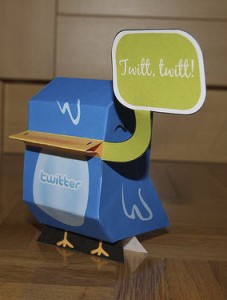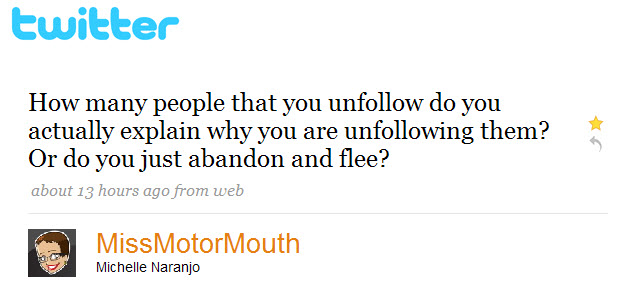 Our One Week of Twitter assignment begins on Thursday, January 22, and will end at midnight on January 29. Your blog post about this experience is due before class on February 2.
Our One Week of Twitter assignment begins on Thursday, January 22, and will end at midnight on January 29. Your blog post about this experience is due before class on February 2.
Setting Up Your Twitter Account
- Go to Twitter. Click Get Started, and sign up. I prefer it if you use some version of your first and last name as your Twitter ID. (Avoid putting numbers in your Twitter ID, or you may appear like a spammer.)
- Upload a photo or avatar.
- Write a brief (140-character or fewer) bio. It’s good to mention that you’re a PR student.
- Send a tweet saying “I’m a student in @barbaranixon’s #PRCA2330 class” or something similar. Be sure to include the #PRCA2330 indicator.
Setting Up Your Following List
- Visit the Twitter search page for #PRCA2330. Most of the people you see in this search will be your classmates.
- Click on the name of your classmate.
- Over the course of the next week, send at least twenty tweets (Twitter messages of 140 characters or less). Your tweets could concern something you’re doing or perhaps point others to something interesting or funny you read online. Maybe you could even pose a question that you’d like others to answer.
Additional Information
- Review my tips on how college students can use Twitter to their advantage.
- Review Prof. Sam Bradley’s College Student’s Guide: Twitter 101.
- After the week is over, add a 250-word (minimum) post to your blog about the experience and what you got out of it. Be sure to include at least one way you might find value in continuing your account in Twitter. This blog post is due before class on February 2.
- There’s no requirement to maintain your Twitter account after this experiment is done; it will not affect your grade if you discontinue it. However, you might want to keep trying it for a while longer. I found it took me about a week to feel comfortable with it and really begin to learn its value.
Questions? Just send me a DM (direct message) or an @ (reply) in Twitter!
NOTE: Many thanks to Kaye Sweetser and Karen Russell for their ideas prompting this assignment.







 If you teach Public Relations at a college or university and are also a user of
If you teach Public Relations at a college or university and are also a user of 